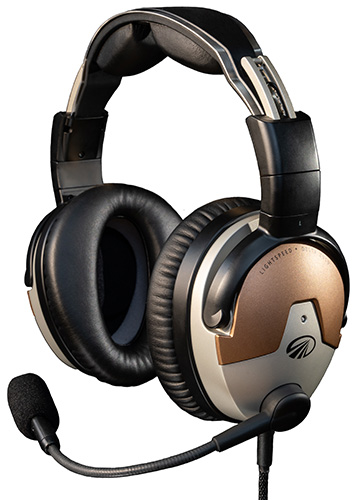Not long ago, Lightspeed Aviation took aviation headsets in a whole new direction: the Lightspeed Delta Zulu not only delivers industry leading sound, quality, and comfort, it also has built-in digital features that are already making pilots and passengers safer in the air. We recently interviewed Brian Frost, Lightspeed’s Executive Vice President of Product Innovation and Quality, for a behind-the-scenes look at why and how the Lightspeed Delta Zulu ANR headset came to be.
What was the impetus behind creating the Lightspeed Delta Zulu headset?
“We’ve been wanting to push all our Lightspeed headsets further into the digital realm for a while. If you think about the cockpit, over the history of aviation, the devices have evolved from steam gauges to highly integrated digital systems with robust data analysis on the backend. Where it used to be a simple gauge, like ‘what’s your oil temperature,’ now you can tell how much torque you’re putting out or that one piston head is hotter than the other ones, and you can really tune your engine.
We have sophisticated systems to be able to monitor engines, but no one had made a similar jump with headsets. The last big improvement was noise cancellation, and that was almost 30 years ago now. But here we are in a unique, head-worn position, attached to the pilot. Other systems monitor the plane, the weather, the GPS coordinates. But nothing is monitoring the pilot—nobody’s taking care of the person who’s the most critical part of the aircraft system. That’s what we set out to do with the Lightspeed Delta Zulu, with its Kanari® smart alert technology that monitors levels of carbon monoxide, and HearingEQity® technology for optimized hearing and communications.”
How does the Lightspeed Delta Zulu take advantage of digital technology, and were there any technical challenges in designing it?
“I’ve worked on 5 headsets over my years with Lightspeed, and this was definitely the most exciting and the most challenging. When we started with the PFX product, that was the first push into that digital realm. But the technology wasn’t there yet. It was a great ANR headset, but it ate batteries fast and the control box was huge. Today’s technology now lets us shrink all this down into a form-factor that’s about the size of the Zulu 3 battery box. What once required a 7″ x 2 1/2″ control box is now delivered by a 40mm x 10mm chipset. It’s been a remarkable shift in technology to shrink all that capability down, coupled with advanced power management for better battery life plus integration with core systems. That’s changed what we can focus on internally and allowed us to work on integration and data usage and what can we do with that data to make the individual pilot and the aviation community safer.
Integrating all the different features was the most challenging part of the design. We had to combine sensors, software and hardware, and cloud connectivity into a headset that’s still the same size as our legacy ones. We worked closely with technology providers, using state of the art tools to get all these components working together smoothly and in a small form-factor.”
It’s clear how the Lightspeed Delta Zulu makes pilots safer through CO monitoring and better ability to hear comms, but you said it makes the aviation community safer? How does it do that?
“Through digital information. We have three data models for using the information captured by the Lightspeed Delta Zulu headset. First, we use it in real time to inform the pilot of what’s going on, through the headset, right away. For example, we give the pilot audio cues about carbon monoxide, using the Kanari technology. We alert them when CO passes critical thresholds, and we enable the pilot to change the alert thresholds to be more sensitive if they want to.
Second, the pilot can use the app to proactively protect themselves. Through the app, they can visualize the data after the fact and see what’s been happening in the plane. They can also upload it onto their own computers and include it with their aircraft data, so they can spot abnormalities or problems that are developing over time.
Third, with the pilot’s permission, the data is anonymized and uploaded to the cloud where Lightspeed can analyze it and look at trends. We call this voluntary opt-in service the Personal Safety Data Partnership Program (PSDPP).
We’ve been uploading data to the PSDPP, our custom-designed analysis program since the Lightspeed Delta Zulu launched. In the first 9 months, we have data from about 50,000 flights where pilots agreed to share their data. In this large sample, we discovered that about 2.5% of flights had CO of at least 30PPM at some point during the flight. Our goal with collecting this data and sharing it to help make the community more aware of the prevalence of CO, and to be able to take action in their own situation. Pilots love to share, and they love to learn.”
Now that you know the “how” and the “wow” of the Lightspeed Delta Zulu, check out the next blog in the interview series with Brian Frost, as he discusses updates and technical enhancements made to the Lightspeed Delta Zulu, and how user experiences are expanding his view of the product.

Lightspeed Delta Zulu®
Lightspeed creates products to protect and save lives and manufactures the best, most premium aviation headsets for pilots. The Lightspeed Delta Zulu® ANR headset is built for pilots who understand the importance of comfort, safety, and control. It includes our best ANR to date, with the superior comfort and durability you expect from a Zulu series headset from Lightspeed, while also introducing groundbreaking smart technology that has saved the lives of pilots and their passengers.
Try for yourself! The Lightspeed Delta Zulu has a 30-day Money Back Guarantee















Leave a Comment